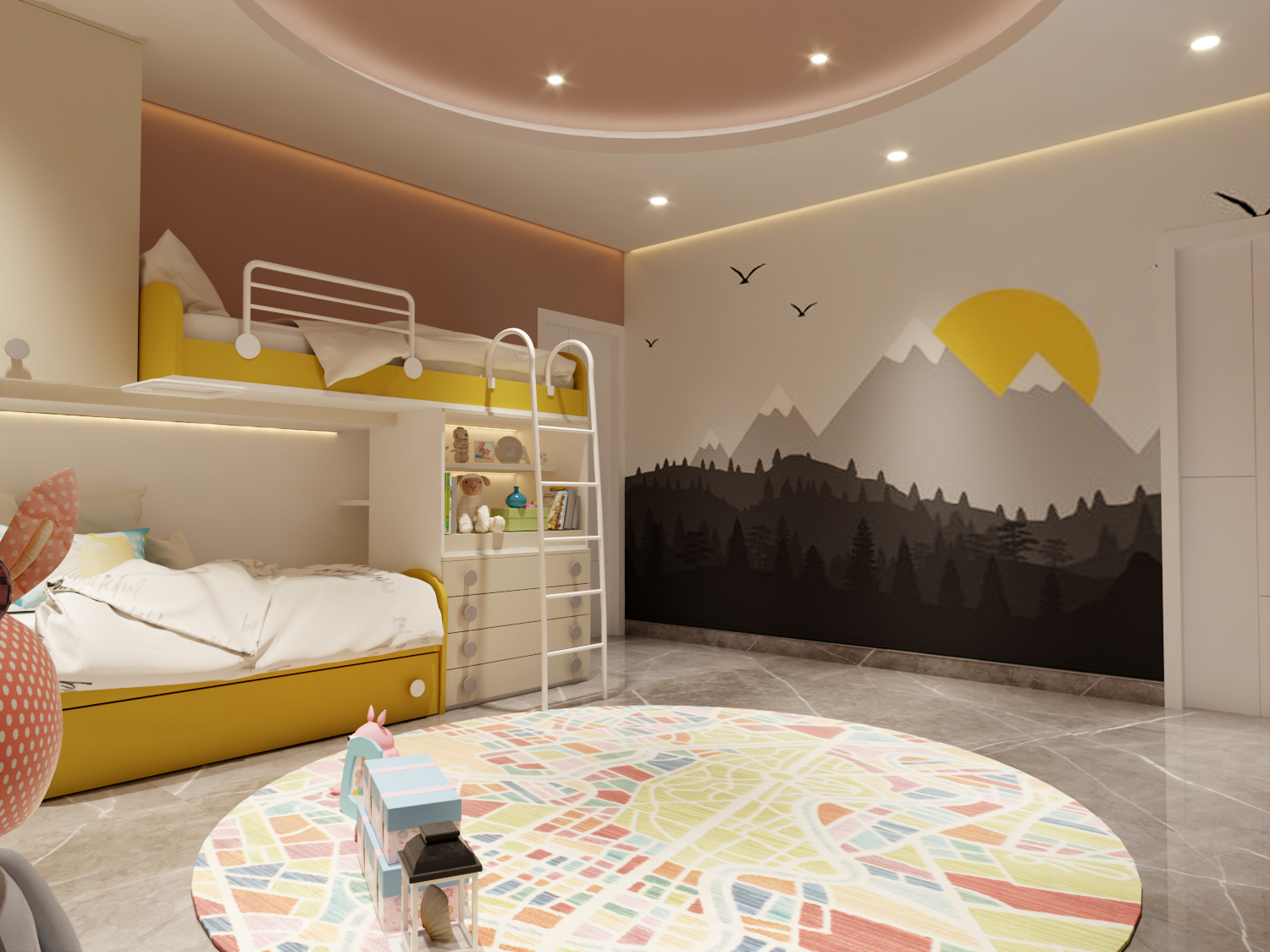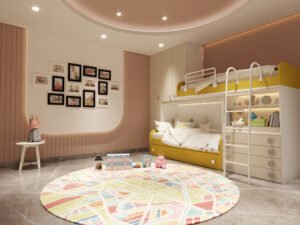Designing a kid’s room can be a fun and creative process. Here are some tips to help you create a functional, safe, and enjoyable space for children:
1. Safety First
- Furniture: Choose furniture with rounded edges to prevent injuries. Secure heavy furniture to the wall to prevent tipping.
- Materials: Use non-toxic paints and finishes. Opt for hypoallergenic materials for bedding and upholstery.
- Electrical Outlets: Use outlet covers to prevent accidental shocks.
2. Age-Appropriate Design
- Toddlers: Focus on safety and accessibility. Use low shelving and storage that they can reach.
- School-Age Kids: Create a dedicated homework area with a desk and comfortable chair.
- Teens: Allow for personal expression and provide a space for socializing.
3. Storage Solutions
- Toy Storage: Use bins, baskets, and shelves to keep toys organized. Label storage containers to help kids learn organization skills.
- Clothes Storage: Ensure there’s adequate closet space or dressers for clothes. Consider adding hooks for bags and jackets.
- Multi-Functional Furniture: Use beds with built-in storage or benches with storage underneath.
4. Functional Layout
- Zones: Divide the room into zones for sleeping, playing, studying, and storage.
- Flow: Ensure there’s enough space for kids to move around freely. Avoid clutter and keep pathways clear.
5. Personal Touches
- Themes: Incorporate themes or favorite colors, but keep major elements neutral so they can grow with the child.
- Artwork: Display your child’s artwork in frames or on a corkboard. This can be easily updated as they create new pieces.
- Customization: Use removable wall decals, name plaques, and personalized bedding to add a unique touch.
6. Lighting
- Natural Light: Maximize natural light with sheer curtains or blinds that can be easily adjusted.
- Task Lighting: Provide desk lamps for study areas and bedside lamps for reading.
- Nightlights: Consider adding a nightlight for comfort and safety during the night.
7. Color and Decor
- Color Scheme: Choose calming colors for sleep areas and more vibrant colors for play areas.
- Wall Decor: Use wall stickers, murals, or patterned wallpaper to add interest without overwhelming the space.
- Rugs and Textiles: Use rugs to define different areas and add warmth. Choose durable, washable fabrics.
8. Interactive Elements
- Chalkboard or Whiteboard: Create a wall or section where kids can draw and write.
- Reading Nook: Set up a cozy corner with pillows and bookshelves to encourage reading.
- Play Areas: Include spaces for building blocks, crafts, or other favorite activities.
9. Flexibility
- Adjustable Furniture: Choose furniture that can adapt as your child grows, such as adjustable desks and beds that can convert from toddler to twin size.
- Modular Systems: Use modular storage systems that can be reconfigured as needs change.
10. Involve the Kids
- Preferences: Let your child be part of the design process by choosing colors, themes, or decor items they like.
- Projects: Incorporate DIY projects that you can do together, such as painting furniture or making decorations.
By combining safety, functionality, and creativity, you can design a kid’s room that is both practical and delightful for your child.

